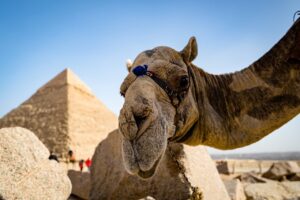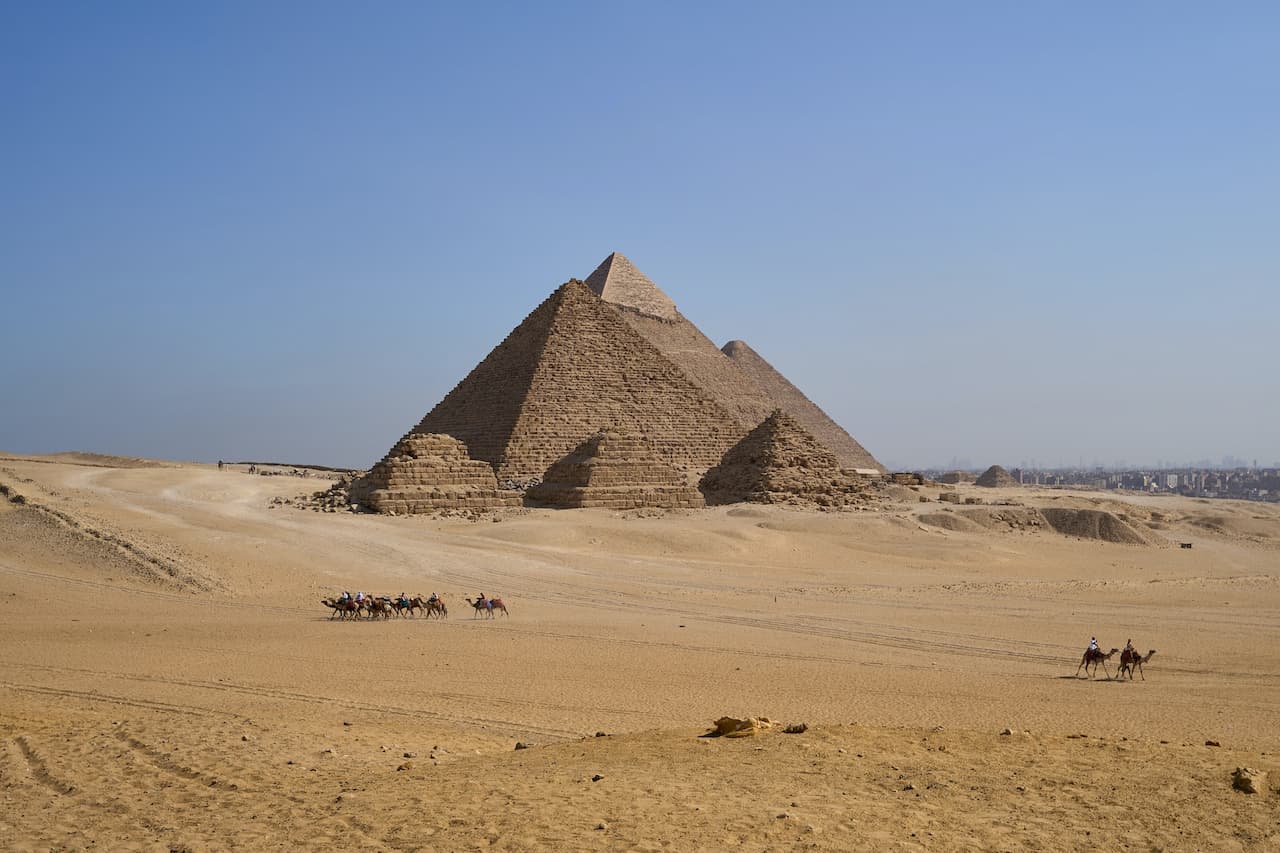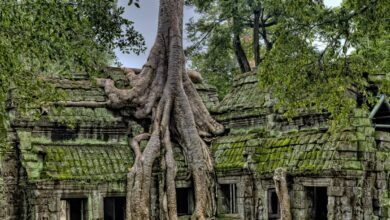Great Pyramid of Giza
The Ancient Egyptians built the Great Pyramid of Giza. It is the last surviving Wonder of the Ancient World located near Cairo, Egypt. It was 147 meters tall when it was built and the tallest building in the world for over 3,800 years. The Pyramids of Giza are the world’s largest and most recognizable pyramid structures. They were constructed to honor certain Pharaohs of Egypt’s fourth ruling dynasty during the Old Kingdom period. The Old Kingdom lasted from 2686 to 2181 BCE and was the first great era of Egyptian civilization. Giza’s pyramid complex includes three main pyramids and the famous Sphinx statue.
Historical Significance
Religion was fundamental to Egyptian society, and the Pharaoh served as a religious and secular ruler. Pyramids were built throughout Ancient Egyptian history as a way for Pharaohs to demonstrate their power. When a Pharaoh died, his body was mummified and buried, sometimes in a pyramid or another tomb, along with valuable possessions. A Pharaoh was considered a semi-divine being who ruled on Earth during his life and passed into an afterlife among the gods.
The Wonder of the Ancient World
The Great Pyramid, the oldest and largest Egyptian pyramid, is also known as the Pyramid of Khufu. There are three pyramids at Giza, but only one is considered an ancient world wonder. Furthermore, it is the only complete ancient world wonder. The Great Pyramid continues to astound tourists and enthusiasts. The Great Pyramid, a true icon of Ancient Egyptian civilization, is also the oldest of the ancient wonders. Construction began around 2600 BC, over 4500 years ago.
Inside the Pyramids of Giza
Perhaps the most significant secret of all is what lies within the Giza Pyramids. The Great Pyramids all contain the tombs of great pharaohs as burial sites. However, much of the building is solid stone. Khufu’s Great Pyramid is an exception to this rule. This Pharaoh’s tomb is in the center of the structure, accessible via a narrow staircase.
Surprisingly, none of the Giza pyramids contain hieroglyphic texts, treasures, or mummies. Decorating tombs were introduced much later in Egyptian history. On the other hand, the pyramids’ interiors are rather austere.
Materials Used to Build Great Pyramid
Traditionally, huge stone blocks were cut by hammering them into wooden wedges soaked in water. The wedges expanded as the water was absorbed, causing the rock to crack. Once cut, they were transported to the pyramid by boat up or down the Nile River.
The Great Pyramid was finished with white “casing stones” on top. These were made of slanted, flat-topped, highly polished white limestone. The casing stones were cut and carefully placed to create a smooth surface.
Unfortunately, over time, much of the casing stone was stolen.
- A massive earthquake in AD 1303 loosened many of the outer casing stones carted away in 1356 by Bahri Sultan An-Nasir Nasir-ad-Din al-Hasan to build mosques and fortresses nearby Cairo.
- Muhammad Ali Pasha removed many more in the early nineteenth century to construct the upper section of his Alabaster Mosque in Cairo, not far from Giza.
Later explorers, such as British archaeologists, mentioned massive piles of trash at the bottom of the pyramids left over from the continuing collapse of the casing stones were successively cleared away during continuing excavations of the site.
Theories about Building the Great Pyramid
For centuries we have wondered ‘how were the pyramids built‘. Many theories about the pyramid’s construction techniques have been proposed over the centuries. Historians disagree on whether the blocks were pulled, lifted, or rolled into position. The Greeks thought slave labor was used, but modern discoveries at nearby workers’ camps associated with Giza’s construction suggest that tens of thousands of skilled workers built it instead.
Without the use of pulleys, wheels, or iron tools, Egyptologists predicted that the overall project required an average worker of about 14,500 people and a peak workforce of about 40,000.
The Great Sphinx
The Sphinx was a sacred mythological symbol with a lion’s body and a human’s head. The lion’s body is thought to represent courage and strength. On the other hand, the human head represented a king’s knowledge and intelligence. The Great Sphinx was built in Giza to protect the pyramids.
The astonishing Great Sphinx of Giza has been the subject of much historical debate. It is unclear whether the Great Sphinx was built during or after the construction of Khufu’s Great Pyramid by Khufu’s son Khafre. Throughout ancient Egypt, similar iconography was found in sculptures and carvings.
Visiting the Pyramid Today
The pyramid stands almost as proud and tall today as it did when it was first built, though its height has been reduced to 137 meters without the limestone casing. Visitors can admire its iconic silhouette from the outside or go inside to visit the Great Gallery and both royal chambers.
The Giza site also includes the Khafre (Khufu’s son) and Menkaure pyramid complexes, as well as the Giant Sphinx of Giza. It is possible to visit the pyramids on your own. There is so much to see and discover and many stories, hypotheses, and mysteries.





